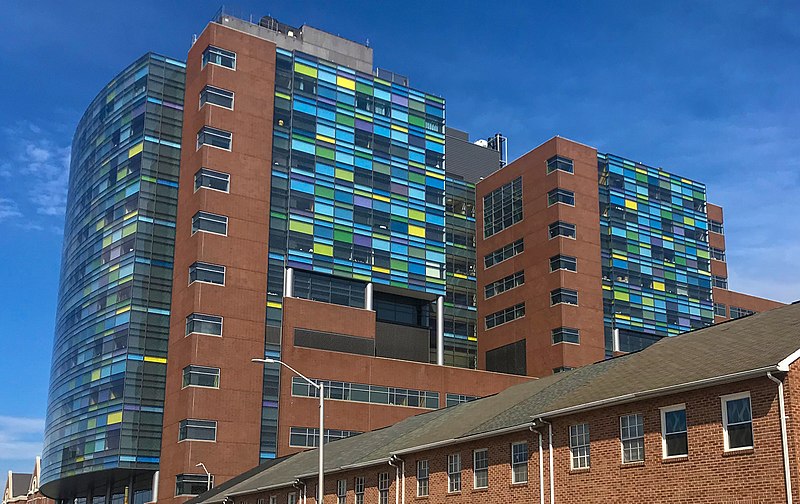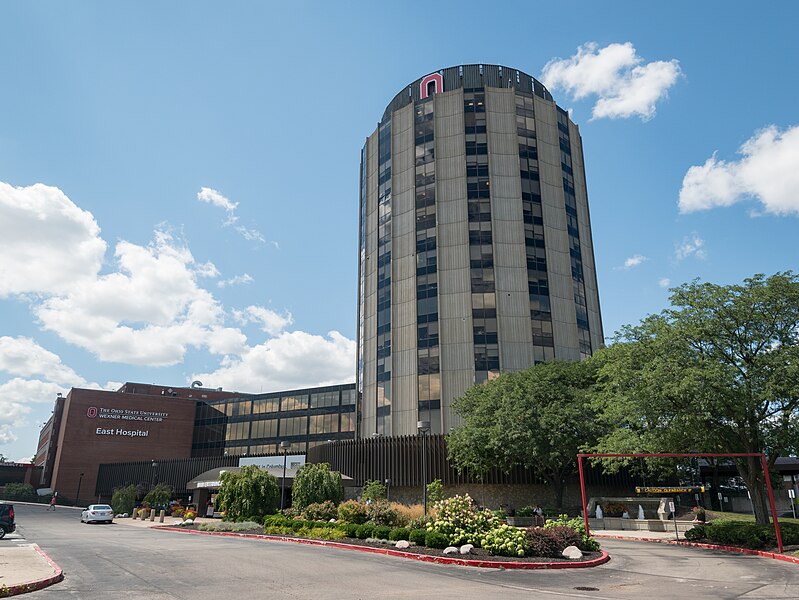The largest hospitals in the United States are more than just expansive buildings; they’re hubs of medical innovation, education, and essential patient care. These hospitals serve massive regions, often supporting entire communities with advanced treatments, specialized care centers, and research facilities. From world-renowned teaching hospitals to trauma centers handling complex cases, these institutions are equipped with thousands of beds, cutting-edge technology, and skilled medical teams dedicated to meeting a wide range of healthcare needs. Each hospital plays a unique role, helping to shape the future of medicine while providing essential services to millions of patients every year.
New York-Presbyterian Hospital, New York, NY

New York-Presbyterian Hospital, among the largest healthcare providers in the U.S., offers over 2,600 beds across multiple campuses. This hospital spans across New York City, featuring specialized facilities like the Weill Cornell and Columbia University Medical Centers. Known for its comprehensive trauma and emergency care services, it also serves as a primary teaching hospital. The hospital employs thousands of healthcare professionals, making it one of the most extensive employers in the region. Its facilities include specialized institutes for cancer, cardiology, and mental health, treating millions annually. Renovations and expansions continue to shape its capabilities, with a focus on cutting-edge technology. New York-Presbyterian remains a cornerstone for advanced care in the Northeast.
Cleveland Clinic, Cleveland, OH

The Cleveland Clinic, with over 1,400 beds, has earned a reputation for specialized medical care, particularly in cardiology and cardiovascular surgery. This Ohio-based hospital is sprawling, covering approximately 170 acres with multiple buildings. Known globally, it serves patients not only from the U.S. but internationally, treating over 7 million patients each year. Cleveland Clinic has satellite campuses across the U.S. and in other countries, extending its reach. Employing some of the top doctors, the clinic supports advanced medical research and education through extensive residency programs. Its recent expansions emphasize holistic patient care and sustainability. The hospital’s innovation continues to impact global medical standards.
AdventHealth Orlando, Orlando, FL

AdventHealth Orlando, part of the larger AdventHealth network, provides nearly 2,300 beds for patients in the central Florida region. Known for its substantial size, the campus includes specialized services such as cancer treatment and cardiology. Its affiliation with the Mayo Clinic Care Network enhances patient care through collaborative medicine. AdventHealth also hosts an extensive research institute that explores areas such as genomics and regenerative medicine. The hospital handles a high patient volume annually, making it one of the busiest in the country. Expansion projects focus on enhancing critical care and emergency services. AdventHealth Orlando’s reach extends across a large regional population.
Jackson Memorial Hospital, Miami, FL

Jackson Memorial Hospital stands as a massive medical center in Miami, providing around 1,550 beds. As part of the Jackson Health System, it serves South Florida, often focusing on trauma and critical care. It’s a primary teaching hospital for the University of Miami’s medical school, training a vast number of future healthcare providers. The hospital has a level 1 trauma center and specializes in transplant services, including heart, liver, and kidney transplants. Jackson Memorial’s facilities include a large outpatient center, adding to its capability to serve numerous patients. It’s also a research hub with partnerships in clinical trials. The hospital continues to expand its services to meet rising demands in the Miami-Dade area.
Stanford Health Care – Stanford Hospital, Stanford, CA

Stanford Hospital, part of Stanford Health Care, offers approximately 600 beds in a state-of-the-art facility. Recognized for high-tech innovations, Stanford’s facilities include advanced diagnostic and treatment centers. The hospital is particularly known for its heart and lung transplants, drawing patients from around the world. Affiliated with Stanford University, it’s a significant teaching hospital and research institution. Recent expansions have incorporated smart rooms that integrate digital technology for patient monitoring and care. Stanford Hospital also provides extensive outpatient services to accommodate the high demand in Northern California. It’s widely regarded for setting benchmarks in both care and medical technology.
Texas Medical Center, Houston, TX

Texas Medical Center in Houston is the largest medical complex in the world, housing multiple hospitals, including Houston Methodist and Texas Children’s Hospital. The center spans 2.1 square miles, encompassing over 50 medical and research institutions. Its focus on collaboration allows shared resources, enabling specialized and advanced care for a large patient base. Texas Medical Center hospitals are known for cancer care, cardiovascular surgery, and neurosurgery. The complex also has the highest concentration of hospitals, research centers, and educational institutions globally. With millions of patient visits each year, the center impacts healthcare both locally and internationally. Facilities continually expand to support growing patient demand.
Johns Hopkins Hospital, Baltimore, MD

Johns Hopkins Hospital in Baltimore, Maryland, is one of the largest and most respected medical institutions in the U.S., with about 1,100 beds. Known globally for its cutting-edge medical research, Johns Hopkins is affiliated with the prestigious Johns Hopkins University School of Medicine. Its facilities span various specialties, including oncology, neurology, and cardiology, and it is particularly renowned for pioneering medical procedures. The hospital serves as a top teaching institution, training hundreds of residents annually. Its Sidney Kimmel Comprehensive Cancer Center is a significant part of its offerings, providing advanced cancer treatments. Johns Hopkins is continually upgrading its technology to enhance patient care. It remains a sought-after facility for both treatment and research advancements.
Massachusetts General Hospital, Boston, MA

Massachusetts General Hospital (MGH) in Boston offers approximately 1,000 beds and is the largest teaching hospital of Harvard Medical School. Known for its expertise in complex medical conditions, MGH has extensive research programs in areas such as cardiology and neurodegenerative diseases. MGH provides comprehensive inpatient and outpatient services to thousands of patients each year, both nationally and internationally. The hospital’s facilities include specialized centers for trauma, cancer, and transplant services. As a part of the Mass General Brigham healthcare network, it shares resources with other top hospitals in Massachusetts. MGH continually expands its clinical trials, contributing to medical advancements. Its longstanding history and commitment to care make it a healthcare leader in the U.S.
Mayo Clinic, Rochester, MN

The Mayo Clinic in Rochester, Minnesota, has around 1,265 beds and serves as a comprehensive medical center and research institution. Renowned for its expertise across numerous specialties, it draws patients from around the world seeking advanced treatment options. The hospital has facilities dedicated to areas such as oncology, cardiology, and orthopedic surgery, with a focus on individualized patient care. Mayo Clinic’s collaborative care model and integrated teams set it apart in the healthcare field. With multiple campuses in the U.S., it remains a leader in medical research and education. The hospital’s innovation is evident in its state-of-the-art surgical and diagnostic equipment. Mayo Clinic’s influence on global healthcare continues to grow through its international patient base.
Cedars-Sinai Medical Center, Los Angeles, CA

Cedars-Sinai Medical Center in Los Angeles offers around 886 beds and is widely recognized for its excellence in heart disease and cancer care. Located in the heart of Los Angeles, the hospital serves a vast and diverse population. Cedars-Sinai is also a major teaching hospital, with numerous residency and fellowship programs in specialized areas. Its Smidt Heart Institute is known for advanced cardiovascular procedures and research, attracting patients globally. The hospital’s expansion projects focus on increasing capacity and enhancing critical care facilities. Cedars-Sinai invests heavily in research, with numerous clinical trials underway in various fields. The hospital’s commitment to innovation and patient-centered care has earned it a top-tier reputation.
Mount Sinai Hospital, New York, NY

Mount Sinai Hospital, a central part of the Mount Sinai Health System in New York, provides nearly 1,134 beds. Situated in Manhattan, this hospital is renowned for its specialized centers in geriatrics, cardiology, and oncology. Mount Sinai’s teaching programs are affiliated with the Icahn School of Medicine, training hundreds of medical professionals. The hospital’s Dubin Breast Center and Tisch Cancer Institute are integral to its reputation in cancer care. Recent developments at Mount Sinai have focused on expanding outpatient services to better serve the community. As a research powerhouse, Mount Sinai conducts advanced studies in fields like genomics and personalized medicine. Its legacy as a premier healthcare institution remains strong.
Northwestern Memorial Hospital, Chicago, IL

Located in Chicago, Northwestern Memorial Hospital offers around 894 beds and serves as a flagship facility of Northwestern Medicine. It is particularly renowned for its cardiac, cancer, and women’s health programs, attracting patients from across the Midwest. Northwestern Memorial is the primary teaching hospital for Northwestern University’s Feinberg School of Medicine. The hospital has cutting-edge technology, including robotic surgery systems and advanced imaging. Expansion projects have added new patient towers, providing more specialized and intensive care units. Northwestern Memorial emphasizes research and clinical trials, especially in cardiovascular and oncology care. The hospital’s comprehensive services and facilities make it a healthcare leader in the region.
Memorial Hermann-Texas Medical Center, Houston, TX

Memorial Hermann-Texas Medical Center, one of the largest hospitals in Houston, offers nearly 1,100 beds. It is part of the extensive Memorial Hermann Health System, which operates multiple facilities across Texas. This hospital is renowned for its trauma and emergency services, including a Level I trauma center and a comprehensive burn center. Memorial Hermann-Texas Medical Center is affiliated with the University of Texas Health Science Center, making it a hub for medical education and research. The hospital also houses specialized institutes for heart, neuroscience, and transplant care. Expansions and renovations are focused on enhancing critical care facilities. Memorial Hermann’s role in trauma care is crucial for the Houston area, with services that draw patients from across the state.
Vanderbilt University Medical Center, Nashville, TN

Vanderbilt University Medical Center, located in Nashville, Tennessee, offers about 1,100 beds and serves as a leading hospital in the Southeastern U.S. Affiliated with Vanderbilt University School of Medicine, it provides extensive residency programs in multiple specialties. The hospital is particularly known for its cancer, transplant, and neurology services, attracting patients from a large region. It includes Monroe Carell Jr. Children’s Hospital, making it one of the few large hospitals with specialized pediatric care. Vanderbilt also emphasizes research, with multiple clinical trials conducted yearly. Expansion projects aim to enhance emergency and trauma services. The hospital’s integrated approach to education, research, and patient care continues to shape its reputation.
Duke University Hospital, Durham, NC

Duke University Hospital in Durham, North Carolina, offers around 957 beds and is part of the renowned Duke University Health System. Known for specialized care in cardiology, cancer, and orthopedics, it draws patients from all over the country. Duke Hospital is a primary teaching site for Duke University School of Medicine, offering a wide range of residency and fellowship programs. The hospital is known for pioneering treatments and medical research, particularly in cancer and cardiovascular medicine. Duke’s facilities include the Duke Cancer Institute, a leader in advanced oncology care. Expansion projects focus on increasing inpatient and surgical capacity. Its reputation for excellence makes it one of the top hospitals in the Southeast.
Ohio State University Wexner Medical Center, Columbus, OH

The Ohio State University Wexner Medical Center, located in Columbus, Ohio, has about 1,400 beds and is a top-tier academic hospital. As the main teaching hospital for Ohio State University College of Medicine, it offers extensive training programs in various medical specialties. Known for its cardiac, neurological, and cancer care, it draws patients from across Ohio. Wexner Medical Center also houses specialized research centers focusing on areas such as regenerative medicine and cancer. The hospital has been expanding, with new buildings added to increase its outpatient and surgical capacity. Its commitment to medical education and research has a statewide impact on healthcare. Wexner Medical Center continues to grow in both size and reputation.
This article originally appeared on Rarest.org.
More From Rarest.Org
The ocean is home to an incredible variety of plants that thrive in saltwater. These unique species have adapted to the harsh conditions of the sea, flourishing in environments that are both rich in nutrients and constantly in motion. Read more.
Throughout history, many legendary artifacts have mysteriously disappeared, leaving behind unanswered questions and endless speculation. These treasures, often tied to royalty, religion, or cultural significance, vanished under circumstances that continue to captivate historians and adventurers alike. Read more.
Universities have long been the backbone of higher education, with some institutions dating back nearly a thousand years. These ancient schools, still thriving today, have shaped the intellectual and cultural landscape of their respective regions. Read more.



